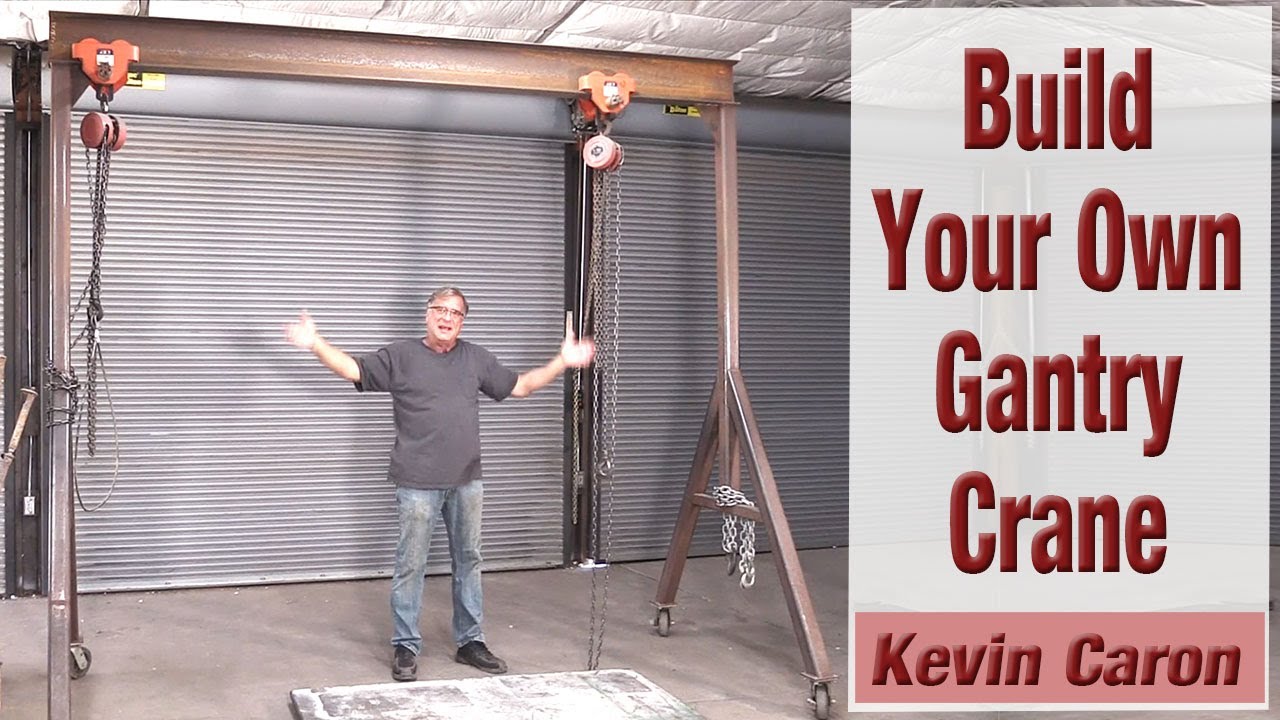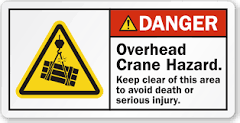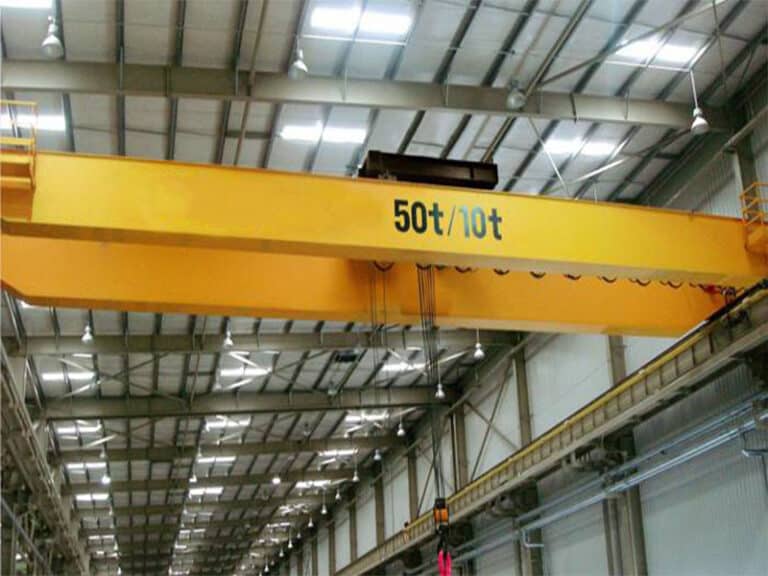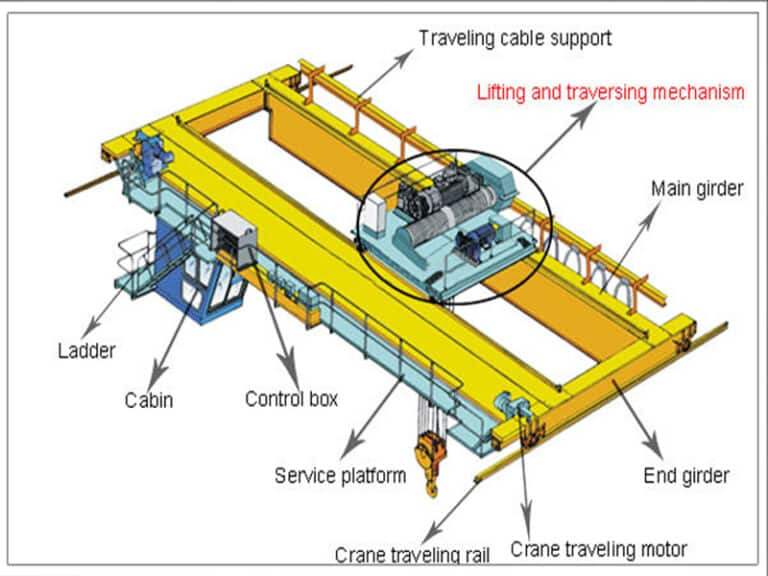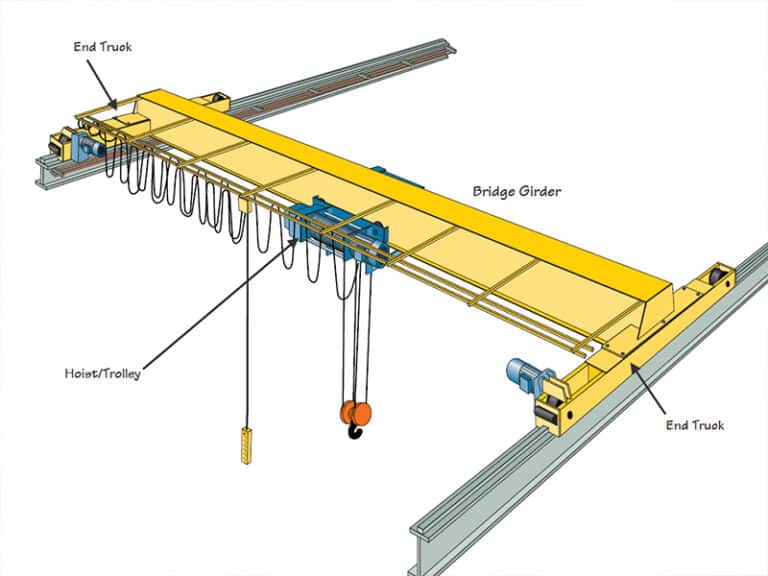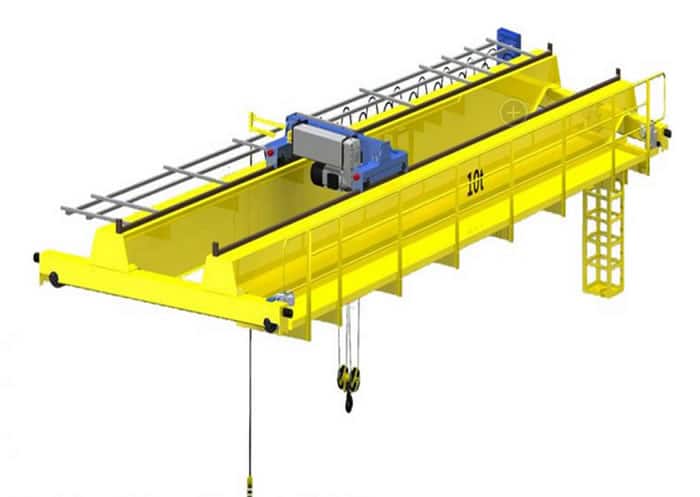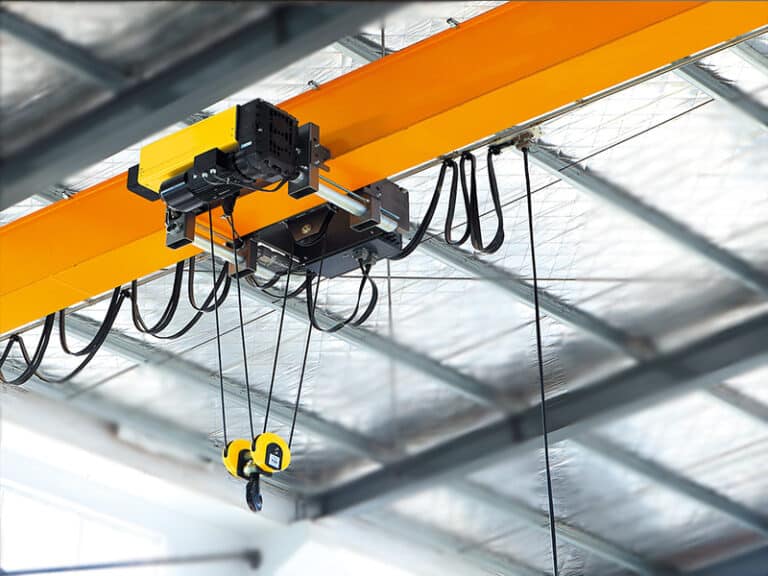Introduction
An overhead crane, also known as a bridge crane, is a type of industrial crane that operates overhead, using parallel runways and a travelling bridge to lift and move heavy loads. Overhead cranes are commonly used in manufacturing, construction, shipping, and other industries where large, heavy materials need to be moved quickly and efficiently.
Overhead cranes are highly versatile and can be customized to suit a wide range of applications. Some common uses of overhead cranes include:
Manufacturing: Overhead cranes are used to move heavy raw materials, parts, and finished products around a factory or manufacturing plant.
Construction: Overhead cranes are used to lift and move heavy materials such as steel beams, precast concrete, and machinery on construction sites.
Shipping: Overhead cranes are used in ports and shipping yards to unload cargo from ships and transport it to storage areas.
Warehousing: Overhead cranes are used in large warehouses to move heavy loads between storage areas and trucks for shipping.
Designing an overhead crane
To design an overhead crane, there are several important steps that must be followed. These steps include:
Determining the load requirements: The first step in designing an overhead crane is to determine the load requirements. This includes the weight and size of the load that will be lifted, as well as any special requirements such as the need for precision movement or lifting in hazardous environments.
Selecting the type of crane: There are several different types of overhead cranes to choose from, including single girder, double girder, and gantry cranes. The type of crane selected will depend on the specific needs of the application.
Calculating the rated load capacity of the crane: Once the type of crane has been selected, the next step is to calculate the rated load capacity of the crane. This is the maximum weight that the crane is designed to lift safely.
Designing the crane structure: The structure of the crane, including the runways, support structure, and bridge, must be designed to withstand the weight of the load and the stresses placed on the crane during operation.
Choosing the hoist and trolley: The hoist and trolley are the components of the crane that actually lift and move the load. These components must be selected based on the rated load capacity of the crane and the specific requirements of the application.
Building the crane
Once the design process is complete, the next step is to build the crane. This includes:
Constructing the runway: The runway is the track on which the crane moves. It must be designed and built to support the weight of the crane and the load it will be lifting.
Installing the support structure: The support structure, which includes the columns and beams that hold up the runway, must be installed and secured in place.
Assembling the hoist and trolley: The hoist and trolley must be assembled and installed on the bridge of the crane.
Connecting the electrical system: The electrical system, including the motor and control panel, must be connected and tested.
Testing the crane: Once the crane is assembled, it must be tested to ensure that it operates safely and efficiently.
Maintenance and safety considerations
Regular maintenance and safety considerations are essential to ensure that the overhead crane operates safely and efficiently. This includes tasks such as:
Regular inspections of the crane and its components
Lubrication of moving parts
Replacement of worn or damaged parts
Training for operators and maintenance personnel
Compliance with safety regulations and guidelines
Conclusion
Building an overhead crane requires careful planning, design, and construction. By following the steps outlined above and implementing regular maintenance and safety measures, an overhead crane can be a valuable asset to a wide range of industries, helping to move heavy loads quickly and efficiently. However, it is important to remember that overhead cranes can be dangerous if not used properly. Therefore, it is essential to follow all safety guidelines and regulations, provide proper training for operators, and perform regular maintenance and inspections to ensure safe and reliable operation.
In conclusion, building an overhead crane requires a detailed understanding of the load requirements, selection of the appropriate crane type, design of the crane structure, and assembly and testing of the crane components. Careful attention to maintenance and safety considerations is also essential for the safe and efficient operation of the crane. With proper planning and execution, an overhead crane can be a valuable investment for many industries, improving efficiency and productivity.

